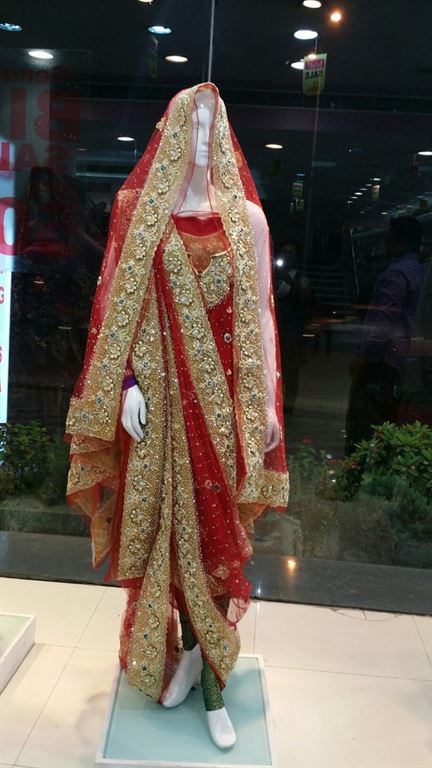When Noor Jehan became the Empress of Mughal India she was already a highly acclaimed fashion diva. During the period of 4 years between her widowhood and marriage to Jahangir she designed clothes for ladies of the Mughal harem and was much sought after.
Once she became the Empress she invited Turkish and Persian craftsmen to India to craft a noble dress, that became particular only for family members of Mughal noble ladies .
One of the specialities of this dress was the dupatta.

The art of dupatta crafting remain particular to Mughal descendants.
Later when Mughal governor Nizam-ul-Mulk declared his autonomy over Hyderabad Deccan Suba, the begums of Nizam’s family modified the creative style of Mughals to form Khada Dupatta.
This slowly became the bridal dress of Hyderabadi girls
The Khada dupatta ensemble consists of a kurta with a blouse, a churidar of brocade and one 6 metre dupatta which is draped in a special way. For brides there is another shorter dupatta calked ghoonghat which is worn as a head covering
The dupatta is draped with the very top part of the middle of the dupatta tucked into the back of the churidaar. The dupatta is folded in pleats at both ends,( like a saree pallu) which are held in place on the left shoulder with a brooch. The free ends of the dupatta are worn under the right shoulder and over the inside of the right elbow.
The Hyderabadi Khada Dupatta: adaptation of Mughal dupatta

